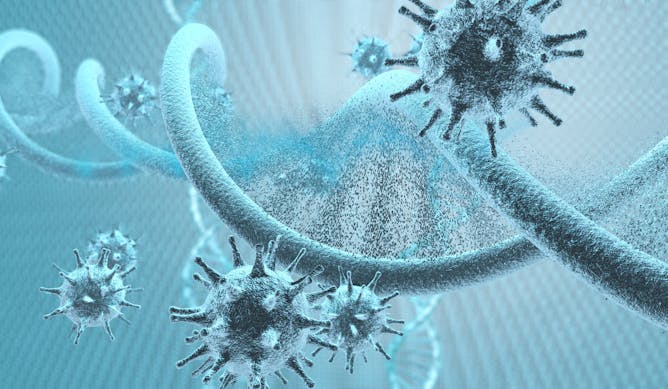|
One of the biggest challenges in the scientific response to the coronavirus pandemic is how little is known about the pathogen and the disease it causes. Our coverage over the past week reflects this search for understanding in a few stories, including one on asymptomatic spread and another exploring the role of genetics in the symptoms and severity of COVID-19.
To understand how the Bluetooth-based system for contact tracing works – and the privacy implications – I recommend this deep dive. And for something totally different, results of a research study, with video, on the impact of road building on Asia’s tiger population.
|

Even if you’re feeling fine, you might be infected by the SARS-CoV-2 virus that causes COVID-19.
John Lamparski/Getty Images Entertainment via Getty Images
William Petri, University of Virginia
Your body can be infected and fight off SARS-CoV-2 without your ever noticing.
|

Apps that warn about close contact with COVID-19 cases are key to relaxing social distancing rules.
Walter Bibikow/Stone via Getty Images
Johannes Becker, Boston University; David Starobinski, Boston University
Bluetooth wireless communication makes it possible for people to get alerts on their phones when they've been exposed to the coronavirus. Adding the right cryptography scheme keeps those alerts private.
|

The relationship between the coronavirus and human genetics is murky.
fatido/E+ via Getty Images
Austin Nguyen, Oregon Health & Science University; Abhinav Nellore, Oregon Health & Science University; Reid Thompson, Oregon Health & Science University
Researchers from Oregon Health and Science University found that variations in genes that code for parts of the cellular alarm system might play a role in how well people fight off COVID-19.
|